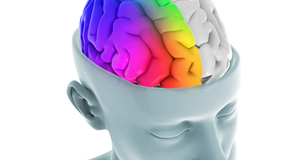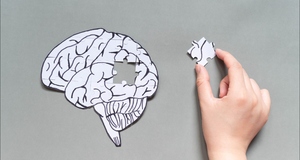Levels of Processing: The Effects of Orthographic, Phonologic, and Semantic Processing on Memory
By
2010, Vol. 2 No. 04 | pg. 1/1
IN THIS ARTICLE
KEYWORDS
The processes by which the human brain creates, stores, and uses memories are very complex and have been the topics of many research experiments in psychology. In 1972, Craik and Lockhart published a paper on levels of processing that suggested, “memory traces can be seen as records of analyses carried out for the purposes of perception and comprehension, and that deeper, more semantic, processing results in more durable traces” (Nyberg, 2002, p. 345). In the levels of processing model, there are three levels. The most shallow of these levels is the orthographic level, which is achieved by only visual cues. The middle level is the phonological level, which is achieved by auditory cues. Lastly, the deepest level is the semantic level, which requires thought about the meaning of the cue. Brain imaging studies have found that semantic processing is associated with increased activity in the left prefrontal regions of the brain, contrasted with lower levels of processing. One such study, performed by Kapur, Craik, and colleagues, had fMRI scans measure the brain activity of participants making semantic decisions. After a retention interval, the participants took a memory test. When correct recognition accompanied high confidence, increased activity was seen in the left prefrontal regions (Nyberg, 2002, p. 347). By looking at the physiological aspects of memory, researchers are able to learn more about how memory operates, and why some forms of processing result in more vivid and easily retrievable memories. One method of studying the effects these levels have on memory is having participants engage in the three levels of processing, and then complete a memory task to see which levels yielded better results. Studies concerning the depth-of-processing (i.e., DOP) effects on memory show that levels of cognitive processing have predictable effects on performance in recall tasks (Boatright-Horowitz, Langley, & Gunnip, 2009, p, 331). Several research studies have shown that tasks requiring semantic processing result in greater recall ability. Wagner and colleagues conducted a study with 12 right-handed, participants who engaged in semantic processing, nonsemantic processing, and visual fixation tasks. Subsequent memory was much higher for semantic tasks (85% recognized) as opposed to nonsemantic processing (47% recognized) (Wagner, et al., 1998). These results appear accurate, because semantic processing requires thinking about the whole task in a conceptual way. Whereas, the orthographic level of processing only allows visual elements to be internalized, and the phonological level of processing only allows the internalization of auditory elements. Of the three levels, semantic processing involves the most effort, as it requires the most analysis of information. Therefore, it is logical that semantic processing yields better memory results. The premise that semantic processing yields better recall abilities is the focus of this experiment; executed by Dr. Alan Swinkels of St. Edward’s University in Austin, TX. In order to see the extent to which semantic processing improves recall capabilities, the experiment compared semantic processing with the other two levels of processing, phonological and orthographic. For this experiment, participants had to follow certain instructions that involved making judgments about words. These judgments created the different levels of processing. Counting the number of vowels in a word made the participants engage in orthographic processing, counting the number of syllables in a word made the participants engage in phonological processing, and deciding the pleasantness or unpleasantness of the word made the participants engage in semantic processing. It was predicted that the words the participants made semantic judgments about would be the most memorable to the participants. These results were expected because several studies have shown that semantic processing yields better recall results.MethodParticipantsThis repeated measures design involved 19 participants from an upper level psychology course at St. Edward’s University. The participants consisted of 3 men and 16 women; all participants were between the ages of 18 and 22. The participants completed the experiment as a class requirement, and there were no dropouts during the course of the experiment. MaterialsAn automated PowerPoint with 54 cue slides, 54 word slides, an introduction slide, and an ending slide was used. Each cue letter slide was presented for exactly three seconds, and every word slide was presented for exactly five seconds. The slides had a solid color background, with the word or cue letter positioned in the middle of the slide without distractions surrounding the word or cue letter. DesignThis experiment was a repeated measures design, with one independent variable that had three levels. The independent variable was the depth of processing the participants engaged in. The levels of the independent variable were the three levels of processing: orthographic, phonological, and semantic. Every participant received a response sheet that had instructions on the top portion, followed by 54 response spaces organized into three columns of 18 response spaces. The three cue letters used were A, B, and C. These cues signaled the participants to count the number of vowels (orthographic processing), count the number of syllables (phonological processing), or indicate whether the word was pleasant or unpleasant (semantic processing). To eliminate specific item effects, there were three different sets of instructions that all had the same cue letters and processing instructions, but in different orders. So, for 1/3 of the participants the “A” cue could mean engaging in the semantic level, whereas for another 1/3 of the participants it could mean engaging in the orthographic level. Every word in the study was used for every level of processing by the three groups. There were three forms of the response sheet, and the sheets were coded with a Roman numeral I, II, or III in the bottom right corner to distinguish which response group the sheets belonged to. Each cue letter group contained an equal number of words, because having unequal numbers in the conditions could have affected the recall of the participants. Each condition was randomly assigned 18 words, and no theme or commonality was present within the condition groups. All words used were common nouns of a low reading level. This experiment used a randomized block design to control for order effects. The 54 words were divided into 18-word groups (different than the condition groups), and within each group there were six randomly selected A, B, and C words. The order of the A, B, and C words was randomly assigned within the groups. By taking this precaution, it assured that there would not be a grouping of one type of word, especially towards the end, which might affect the recall of the words. ProcedureEach participant randomly received one of the three forms of the response sheet. After distributing the sheets, the researcher gave a verbal explanation of what the participants were expected to do, and allowed questions to be asked. The experimenter explained that the experiment was automated and, once started, would run to completion. During the experiment, a cue letter was shown for three seconds. Depending on the instructions on the response sheet, the cue letter prompted the participants to count the number of vowels in the word, count the number of syllables in the word, or state whether the word was pleasant or unpleasant. The word appeared directly after the cue letter and was displayed for five seconds, giving the participants enough time to think about and record their answers on the response sheet in the spaces provided. After the display of the 54 cue letters and words, the participants completed a 30 second distracter task. The researcher instructed the participants to cross out every odd number and circle every even number. The purpose of this task was to clear participant’s short-term memories, ensuring that the last few words of the experiment would not be more memorable due to their placement. After the distracter task, the researcher instructed the participants to flip-over their response sheets and write down as many words as they could remember from the experiment. The participants had five minutes to complete this task. After five minutes, the researcher collected the response sheets. The response sheets were then redistributed, making sure that no participant received his or her own, and scored by the participants, now acting as researchers. The words of each cue letter group were shown, as were the pairings of the cue letters and processing levels for each type of response sheet. With this information, the participants recorded the numbers of orthographic, phonologic, and semantic words recalled on the backs of the sheets. ResultsA single factor ANOVA test showed that the students had better recall with semantic processing (M=7.95) than with phonological processing (M=3.26) and orthographic processing (M=2.84), as shown in Figure 1; F (56, N=19) = 42.66, p<.01. In short, the ANOVA revealed there were significant differences between the levels of processing. A Tukey Post-Hoc Test was conducted to determine the extent of those differences, providing a Tukey hsd of 1.51. The differences between the means of orthographic and semantic (5.11), phonological and semantic (4.69), and orthographic and phonological (0.42) compared to the Tukey hsd show which groups possessed significant differences. This test showed that there were significant differences between the semantic and orthographic levels, as well as the semantic and phonological levels. However, there was no significant difference between the orthographic and phonological levels. These results suggest that the semantic level of processing provides the greatest amount of recall. DiscussionThe results from this study show that there were considerable differences in recall between the semantic and orthographic groups, as well as the semantic and phonological groups. These differences confirm the researcher’s hypothesis that semantic processing would yield better recall than orthographic and phonological processing. Results of this nature have been found by several studies conducted in various manners, confirming semantic processing to be the deepest level of processing with the highest rate of recall. This study dealt with a small group of college students, the majority of whom were women. Possible alterations to this study include increasing the sample size, looking at age differences, and looking at gender differences. Researchers could look into whether there is a certain age at which the effects of levels of processing appear or are fully functional. Additionally, the effects of the processing levels in the elderly could be examined. The brains of women and men function differently in certain ways; therefore, research looking at how the levels of processing affect the brains of men and women may provide interesting results. The results of this study may prove to be helpful in designing teaching styles, as well as examining how memory functions in humans. It is clear that conceptualizing words increases the chances of recalling the words later. Therefore, when teaching, instructors should fully explain and contextualize the learning material so students will engage in semantic processing and internalize the material on a deeper level. This knowledge could also be applied to struggling students and can be used by tutors. Knowing how memory functions will also be able to aid educators, as well as struggling students or those with learning disabilities. Brain imaging studies have already shown that semantic processing is associated with the prefrontal cortex, and further research into this area will, hopefully, reveal more insight into how memory works. ReferencesBoatright-Horowitz, S., Langley, M., & Gunnip, M. (2009). Depth-of-processing effects as college students use academic advising web sites. CyberPsychology & Behavior, 12(3), 331-335. Retrieved October 26, 2009, from the PsycINFO database. Nyberg, L. (2002). Levels of processing: A view from functional brain imaging. Memory, 10(5), 345-348. Retrieved October 26, 2009, from the PsycINFO database. Wagner, A., Schacter, D., Rotte, M., Koutstaal, W., Maril, A., Dale, A., et al. (1998). Building memories: Remembering and forgetting of verbal experiences as predicted by brain activity. Science, 281(5380), 1188-1191. Retrieved October 28, 2009, from the PsycINFO database. Suggested Reading from Inquiries Journal
Inquiries Journal provides undergraduate and graduate students around the world a platform for the wide dissemination of academic work over a range of core disciplines. Representing the work of students from hundreds of institutions around the globe, Inquiries Journal's large database of academic articles is completely free. Learn more | Blog | Submit Latest in Psychology |


















